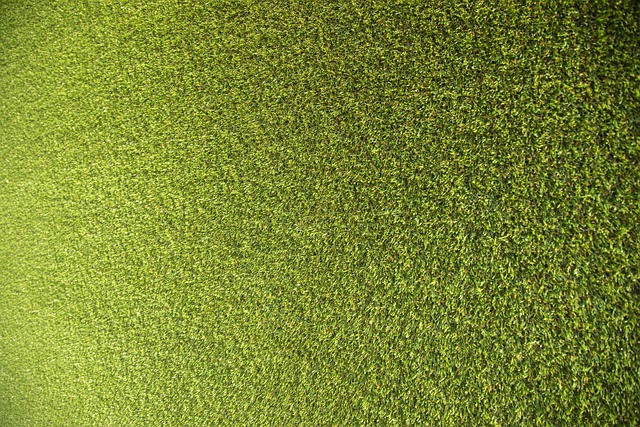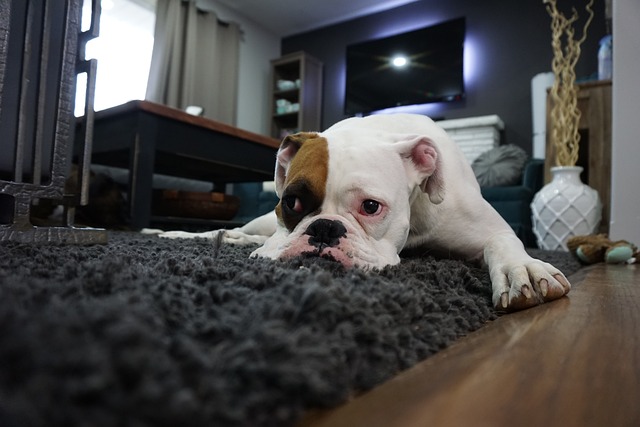This text offers comprehensive guidance on removing pet stains from carpets, addressing varying causes from cats and dogs. Key steps include blotting excess liquid, using enzymatic cleaners or baking soda, scrubbing with a damp cloth (testing first), and for stubborn stains, a vinegar-water mixture. Regular maintenance involves frequent vacuuming, spot-treating spills immediately, and using carpet cleaning solutions. Waterproof mats at entryways and food bowls prevent tracking and staining. Remember, swift action, suitable products, and regular cleaning are crucial to maintaining clean carpets.
Tackling pet stains on your carpet can seem daunting, but with the right approach, you can restore your home’s cleanliness. Understanding the types and causes of these stains is the first step. This guide delves into immediate actions for quick responses, providing essential tools and a detailed step-by-step process to remove common pet messes. Learn professional tips for stubborn stains and discover maintenance strategies to prevent future occurrences. Master the art of How to Remove Pet Stains from Carpet with these proven methods.
Understanding Pet Stains: Types and Causes

Pet stains on carpets can range from small, isolated spots to larger areas of discolouration, depending on the type of pet and their habits. Understanding the causes behind these stains is the first step in knowing how to remove pet stains from carpet.
Different pets leave different types of stains. For instance, cats often create clumps of fur and urine that can result in a strong odour and discolouration. Dogs, on the other hand, may track in mud or leave behind persistent odours from their paws and coats. Understanding these variations will help you choose the most effective cleaning methods for each specific type of pet stain.
Immediate Action: Why Quick Response Matters

When a pet accidentally leaves a stain on your carpet, acting swiftly is crucial in the process of how to remove pet stains from carpet effectively. The longer you wait, the deeper the stain will set into the fibres, making it harder to lift. Immediate action not only increases your chances of successful removal but also prevents permanent discolouration.
In terms of how to handle this, start by blotting the excess liquid with a clean cloth or paper towel. Avoid rubbing, as this can spread the stain further. Then, address the stain using an appropriate cleaning solution – enzymatic cleaners are recommended for pet stains as they break down odours and messes at a molecular level. Always test any cleaner in a small, inconspicuous area first to ensure it won’t damage or discolour your carpeting.
Essential Tools and Materials for Stain Removal

Cleaning pet stains from carpets requires a few essential tools and materials to ensure effective removal without causing further damage. Start with good-quality carpet cleaning solutions designed for tough stains, as these often contain enzymes that break down pet messes. A sturdy spray bottle is ideal for measuring and applying the solution directly onto the stain. Next, invest in a microfiber cloth or sponge; its gentle yet absorbent properties make it perfect for wiping away stains without leaving scratches. Don’t forget a vacuum cleaner with a suitable attachment to suck up any remaining fur, dander, or residue after the initial cleaning. These tools, combined with some basic knowledge of how to remove pet stains from carpet, will help you tackle this common household challenge efficiently.
Step-by-Step Guide to Removing Common Pet Stains

Removing pet stains from carpets doesn’t have to be a daunting task. Here’s a step-by-step guide to tackle common pet stains effectively. Start by blotting the stain with a clean, dry cloth to absorb as much of the liquid as possible. Avoid rubbing, as it can spread the stain further. Next, sprinkle a carpet cleaner or baking soda directly onto the stain, letting it sit for several minutes to allow the powder to act as a natural absorbent. Using a damp cloth or sponge, gently scrub the stained area in circular motions, then rinse with clean water and blot dry. For tougher stains, mix equal parts white vinegar and warm water, apply to the affected area, and let it soak before gently scrubbing and rinsing. Always test any cleaning solution on a small, inconspicuous area first to ensure it doesn’t damage or discolour your carpet.
Dealing with Difficult Stains: Professional Tips

When it comes to tackling stubborn pet stains on your carpet, there are a few professional tips to keep in mind. First, act quickly. The longer a stain sits, the harder it becomes to remove. Blot the area gently with a clean cloth or paper towel to absorb as much of the liquid as possible without spreading it around. Avoid rubbing, as this can push the stain deeper into the fibres.
For particularly challenging stains, consider using a commercial carpet cleaning solution designed for pet messes. These products contain enzymes that break down odours and organic materials, making them more effective than plain water or white vinegar. Always test any cleaning solution on a small, hidden area of your carpet first to ensure it doesn’t cause any discolouration.
Preventing Future Stains: Maintenance and Care

Regular maintenance is key in preventing future pet stains on your carpet. Frequent vacuuming, ideally with a vacuum designed for carpets, helps to remove loose fur and dander, which can prevent clumping and staining. Using a carpet cleaning solution or a mixture of warm water and a mild detergent during each vacuum session can further reduce the buildup of pet hair and grime.
Additionally, establishing a consistent cleaning routine involves spot-treating any spills immediately and wiping down surfaces where pets rest or eat to minimize the transfer of dirt and debris to your carpet. Consider using waterproof mats at food bowls and entryways to barricade against tracking in mud and moisture, which can contribute to staining.
